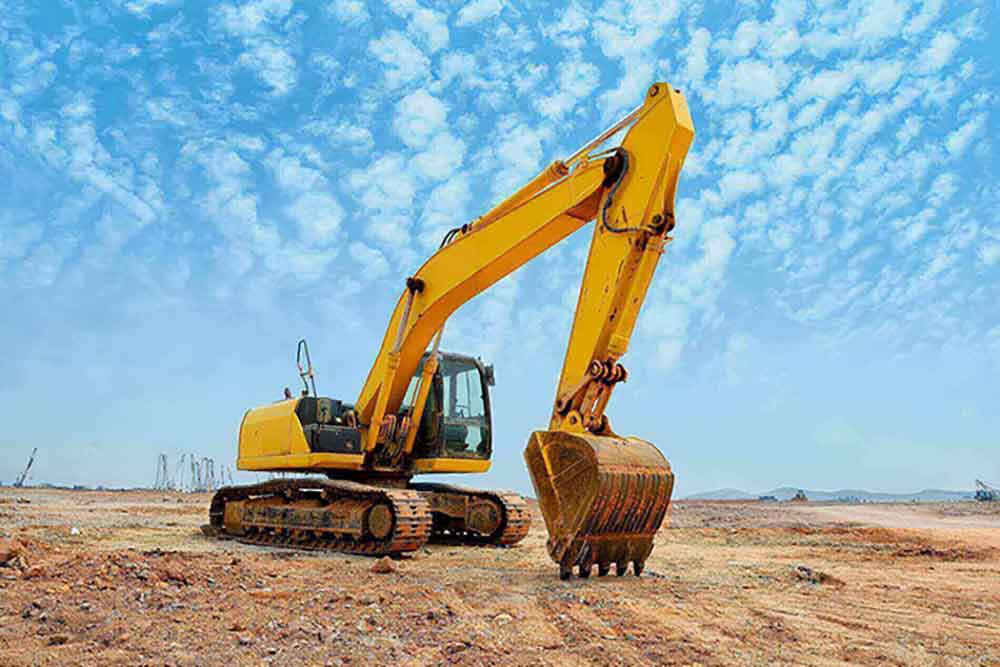Budget-friendly Dozer Rental Providers Near You
Budget-friendly Dozer Rental Providers Near You
Blog Article
Leasing Vs. Acquiring Construction Tools: Making the Right Selection for Your Project
When getting started on a building task, one of the critical choices that forecast managers and stakeholders deal with is whether to rent or purchase building and construction tools. Both choices have their drawbacks and advantages, making the selection an essential one in the project planning procedure. The choice depends upon different elements such as cost factors to consider, task duration, equipment maintenance, scalability, risk, and versatility monitoring. Each component plays an important function in determining the most ideal course for the project's tools demands. forklift rental. Let's explore these aspects better to understand how they impact the decision-making process and eventually the success of the job.
Cost Considerations
When evaluating the economic facet of renting versus getting building and construction equipment, the in advance costs and long-term costs need to be thoroughly thought about. Leasing devices commonly requires lower initial payments compared to acquiring, making it an appealing option for temporary projects or specialists with spending plan restraints. Renting removes the need for large funding investments and decreases the monetary threat associated with equipment ownership, such as upkeep and depreciation expenses. Nevertheless, over time, constantly renting out equipment can build up greater prices than acquiring, particularly for extended jobs.
On the various other hand, getting construction equipment entails higher ahead of time expenses however can result in long-lasting savings, particularly for long-term projects or constant customers. Having tools gives adaptability, comfort, and the potential for resale worth once the task is completed. Furthermore, owning devices enables modification and experience with details equipment, possibly enhancing effectiveness and performance on-site. Inevitably, the choice between acquiring and renting out construction tools pivots on the job's period, frequency of usage, budget plan factors to consider, and long-lasting economic objectives.
Job Period

On the other hand, for long-lasting projects or recurring construction work, buying devices might be the extra economical option. Investing in equipment can lead to cost financial savings in the future, specifically if the tools will be regularly utilized. Additionally, owning tools provides a sense of control over its accessibility and enables modification to fit certain task requirements.

Tools Maintenance
Given the essential role job duration plays in figuring out the most economical method between renting and buying construction equipment, the focus currently moves towards checking out the crucial facet of tools maintenance. On the other hand, possessing equipment needs a proactive approach to upkeep to prevent breakdowns, make certain safety, and extend the equipment's life-span. Eventually, a well-kept building equipment fleet, whether leased or possessed, is vital for the efficient and successful completion of building projects.
Adaptability and Scalability
In the realm of construction tools monitoring, the facet of versatility and scalability holds significant value for job efficiency and resource application. Opting to lease building and construction devices offers a high level of flexibility as it enables the quick modification of tools types and amounts based on the evolving requirements of a task. Renting out enables service providers to access a vast array of customized tools that might be needed for certain tasks without the long-lasting commitment of ownership. This versatility is especially helpful for projects with differing demands or unclear durations (boom lift rental).
Moreover, scalability, one more crucial factor, is inherently linked to versatility. Renting out building tools offers the benefit of conveniently scaling operations up or down as job needs vary. Specialists can rapidly exchange or add tools to match the project's changing requirements without the constraints of my company possessing assets that may end up being underutilized or outdated. This ability to scale sources successfully can lead to expense financial savings and improved task timelines, making renting a positive option for tasks calling for flexibility check my site and responsive resource appropriation.
Risk Management
Efficient danger monitoring in building equipment procedures is paramount to making certain job success and mitigating possible financial losses. Construction jobs naturally involve various threats, such as devices break downs, mishaps, and task delays, which can substantially influence the job timeline and spending plan. By meticulously considering the dangers connected with owning or renting building and construction tools, project supervisors can make educated decisions to minimize these possible risks.
Renting out building equipment can provide a level of risk mitigation by transferring the responsibility of upkeep and repairs to the rental business. This can lower the economic problem on the task owner in situation of unexpected tools failings (mini excavator rental). In addition, leasing supplies the adaptability to access specialized equipment for specific project stages, lowering the threat of possessing underutilized equipment
On the other hand, owning construction tools gives a feeling of control over its use and maintenance. Nevertheless, this also implies bearing the complete responsibility for repair work, upkeep prices, and depreciation, boosting the financial threats connected with equipment ownership. Mindful danger analysis and factor to consider of variables such as job period, equipment usage, and upkeep demands are essential in identifying one of the most appropriate alternative for reliable threat monitoring in building projects.
Verdict
In final thought, when deciding new construction tools between getting and leasing building and construction devices, it is very important to think about price, project period, equipment maintenance, scalability, risk, and adaptability monitoring. Each factor plays a vital role in figuring out the most suitable choice for the job handy. By thoroughly reviewing these facets, job managers can make an enlightened decision that lines up with their budget, timeline, and total job goals.

Report this page